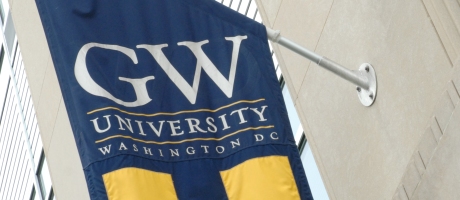The President’s Council on Diversity and Inclusion, which President Steven Knapp created in spring 2010, released its 53-page report on enhancing diversity and inclusion at the university, titled “Diversity: A Key to Academic Excellence,” today.
“The council has identified 12 key goals, and the university is moving forward immediately on five areas that overlap many of our key recommendations,” said Gregory Squires, co-chair of the council and professor of sociology and public policy and public administration. “We are eager to work with all segments of the university and the broader Washington, D.C., community to implement these initiatives and realize what are, admittedly, ambitious objectives.”
Last year, Dr. Knapp had charged the council with identifying “a series of best practices that benefit all members of the GW community, enhance the experience of traditionally underrepresented populations and cultivate a more inclusive climate for students, staff, faculty and the broader community of which George Washington is an integral part.”
“The council's work was based on the recognition that diversity and excellence go hand-in-hand,” said Dr. Knapp. “I am grateful to co-chairs Helen Cannaday Saulny and Gregory Squires, and to all members of the council, for the dedication and diligence that resulted in this very thoughtful and comprehensive set of recommendations. With the council's help, we will move forward on numerous fronts in our ongoing effort to ensure that all members of the George Washington community are recognized, respected and supported.”
Ms. Cannaday Saulny, co-chair of the council, associate vice president and dean of student academic success, said that the areas of immediate focus, as well as new and continuing efforts specifically targeted to students and alumni, will offer rich opportunities to enhance the student and alumni experience.
According to Dr. Squires, the council developed a framework and outlined many of the critical details for enhancing diversity and inclusion with particular attention to the ways those areas would impact academic excellence.
“It never was our intention to provide a detailed blueprint,” he said, “but we certainly have gone beyond general principles.”
The university also recently hired Terri Harris Reed, vice provost for diversity and inclusion.
After reviewing the report, Dr. Knapp, Provost Steven Lerman and Dr. Reed announced five initiatives that the university could implement this year:
• implementing a framework for diversity and inclusion monitoring and self-evaluation throughout the university
• creating a program that supports departmental efforts to diversify the faculty
• constructing a website and “comprehensive communications strategy” to publicize inclusion efforts on campus
• designing programs and policies to ensure the university partners proactively with vendors that are owned by women, minorities and veterans
• continuing to develop resources and training for employees
“Our campus has embraced an ambitious agenda to move us forward in advancing our goals related to becoming a more diverse and inclusive community,” said Dr. Reed. “In the coming months, I will be exploring the range of strategies available to advance this agenda, including many of the council’s recommendations. We will also conduct additional assessment and feasibility studies to ensure we identify and adopt the most promising plan of action for our campus. In particular, we want to address concerns about access and success outlined in the report as they relate to both the student and faculty experience.”


